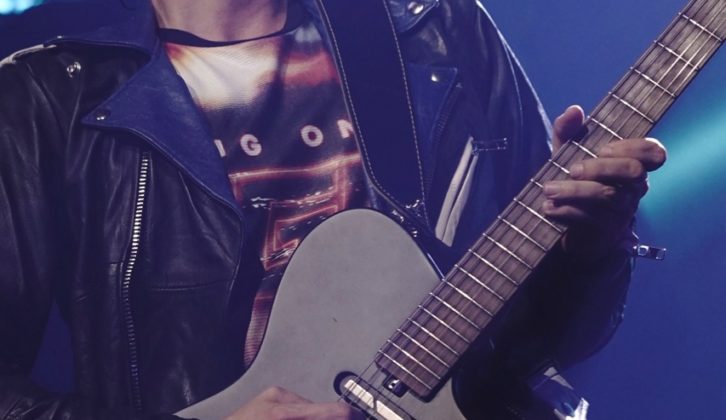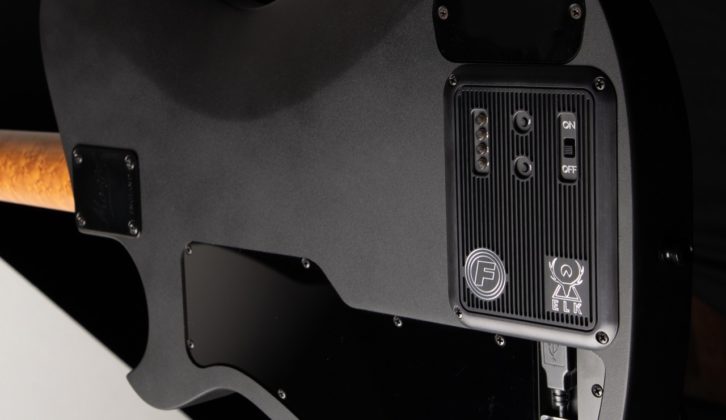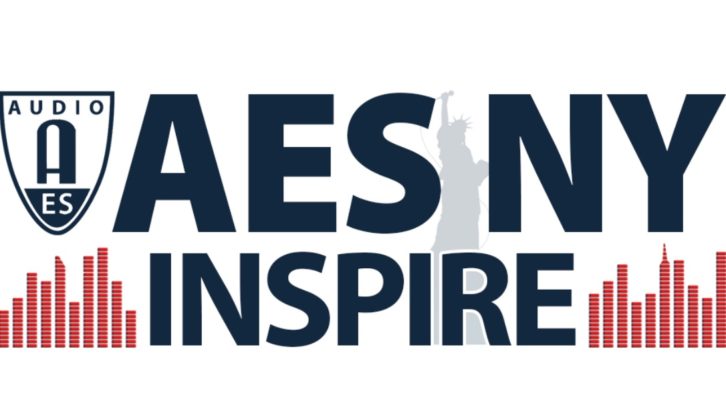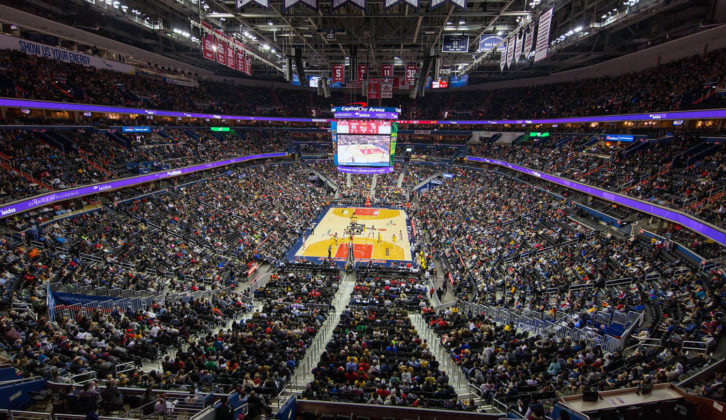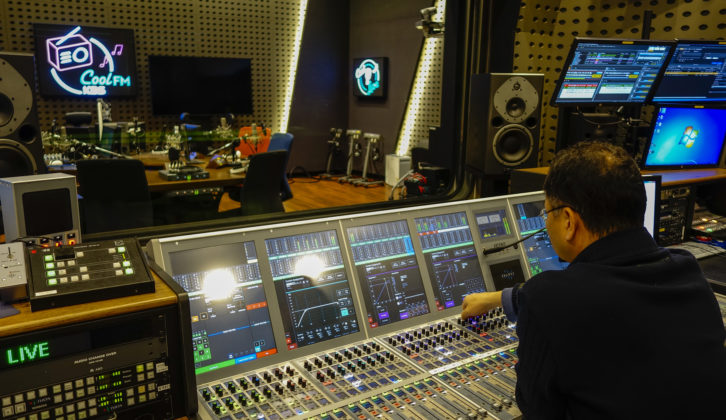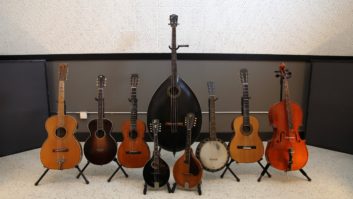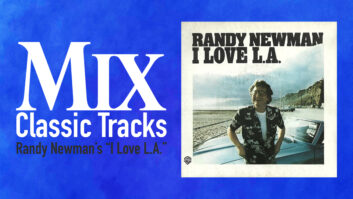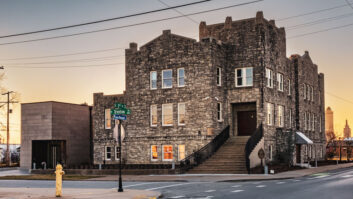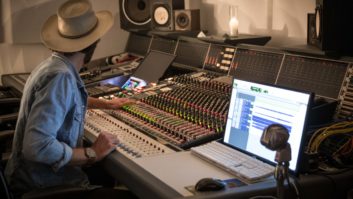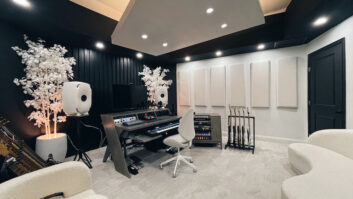Los Angeles, CA (October 25, 2019)—“I’m not doing this to make money. I’m doing it to have fun with people,” says Joachim Garraud of LA Good Vibe, a 36-foot RV converted into a mobile recording studio. While LA Good Vibe is hardly the first RV-based production space, it may well be the first carbon-neutral studio to roll across the southwestern states.
Garraud relocated from France to L.A. seven years ago and until recently had a studio in Hollywood. A DJ for more than three decades, he frequently jets around the world for gigs or back and forth to his studio in Paris. Over the years, he’s racked up credits as a producer, composer or remixer for a long list of artists, including David Guetta, Jean-Michel Jarre, David Bowie, OMD, Kylie Minogue, Cassius and Moby.
After a few days working with him in L.A., artists visiting from Europe would often start bugging him to drive them to Las Vegas, San Francisco or the ocean, says Garraud, “so I decided to merge both things.”
Last year was an opportune time to build an eco-friendly mobile studio, as solar technology took a leap forward and prices dropped, says Garraud. Testing his off-grid concept, he bought a couple of solar panels, hooked them up to a laptop and speakers and—voila! Next he went looking for a vehicle.
“I wanted one that would fit in my driveway, with three slide-out sections,” he says. He found a 2009 Fleetwood Classic and spent three months stripping the interior down and reconfiguring it. The vehicle is fully insulated with Dynomat and Kilmat soundproofing materials so artists can work between destinations without road noises intruding. “In a Bentley or Mercedes, they use 30 square meters [322 square feet]. We used 10 times that,” he reports.
Garraud clad the roof in solar panels that generate enough electricity to power everything from air conditioners and the microwave to a four-piece rock band. The energy is stored in batteries located beneath the vehicle’s floor panels. “My car is a Tesla; I charge it with the bus,” he says.
RVs are gas-guzzlers, of course. “I made a deal with ClearSky Climate Solutions and I pay for each mile to offset the gas. It means nothing to talk about solar energy otherwise.”
The rear bedroom area sleeps four and doubles as a vocal tracking space large enough to accommodate a drum kit. A seating area in the forward lounge also doubles as a bed.
Garraud initially built the bus for personal use, then decided to share it with friends. Now he’s offering it to other people, by invitation. “It’s like welcoming a guest into your home,” he says. “They focus on writing and production, and I take care of everything for them. I cook French food with organic ingredients. It’s great to share time with different people with different knowledge and different cultures.”
Stepping onto the RV, the first thing that catches the eye is a Pioneer RT-707 reel-to-reel machine mounted above the front windshield. At the end of a project, Garraud says, he will often run off a tape copy for the artist as a souvenir. The Pioneer deck also provides playback on the long drives: “It’s sexier than an MP3 player.”
The production workstation is installed in a large slide-out section immediately behind the driver’s seat. Garraud runs Ableton, monitoring on a pair of Focal Solo6 nearfields with a Sub6. “I had the first Pro Tools license in France, in 1992,” he recalls, flying to California to pick up version 1.03, which supported just eight mono tracks. But six years ago he switched to Ableton when Avid abandoned the mobile production market through its reliance on bulky hardware, he says.
A Midas MR18 18-input digital mixer, incorporating 16 preamps, is the heart of the onboard setup and is also mounted in the front fascia. A variety of microphones are available, including a Neumann U 47 and a Sony C-800G. Garraud has installed 10 Focal 300 series speakers, custom-built to fit into the RV’s shallow wall and ceiling spaces, so the mixer is linked to a Behringer unit that routes signals to the vehicle’s multiple playback zones. A 100-foot snake extends the setup’s reach to the great outdoors.
Installed video screens can display the current session to provide musicians with visual cues as they record or overdub. Garraud also offers video production services, including use of a drone.
The vehicle is truly tricked out. From his driving position, Garraud can ask Google Assistant to repatch signals or change speaker levels. Two iPads mounted next to him handle multiple functions, including not only GPS and solar power management but also mixing. A Wi-Fi unit with three SIM slots, each from different carriers, ensures communications access in all but the most remote areas.
Garraud focuses on a sunny four-state region—California, Arizona, Nevada and Utah—that offers some spectacular scenery. “Location is inspiration,” he says. He has subscribed to a Bureau of Land Management program that provides access to 250 million acres of public land and has also made deals with local landowners to park overnight. Since launching the bus in April, he’s visited over three dozen spots, including the Grand Canyon and Joshua Tree National Park.
Indeed, for LA Good Vibe’s debut session, Garraud picked up French pop-rockers Yard of Blondes at LAX when they landed at 5:30 a.m. and whisked them off to a dry lakebed in the Mojave Desert, three hours to the northeast. “They went to bed and had a power nap while I drove. The idea was to do a 24-hour trip, including writing, recording, mixing and mastering. It was to show that you can sleep, have breakfast, write, record and drive at the same time; you don’t lose time with the trip.” More recent guests have included deadmau5, Jean-Michel Jarre and Dirtyphonics.
“It’s an alternative solution to producing music,” says Garraud. “I’m not able to bring tons of equipment because I don’t have space, so I’m not competing with professional studios, but it’s something that can really help the creative process.”
LA Good Vibe • www.lagoodvibe.com
